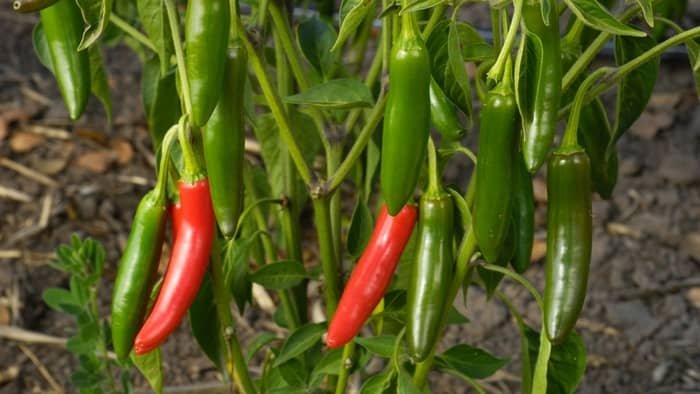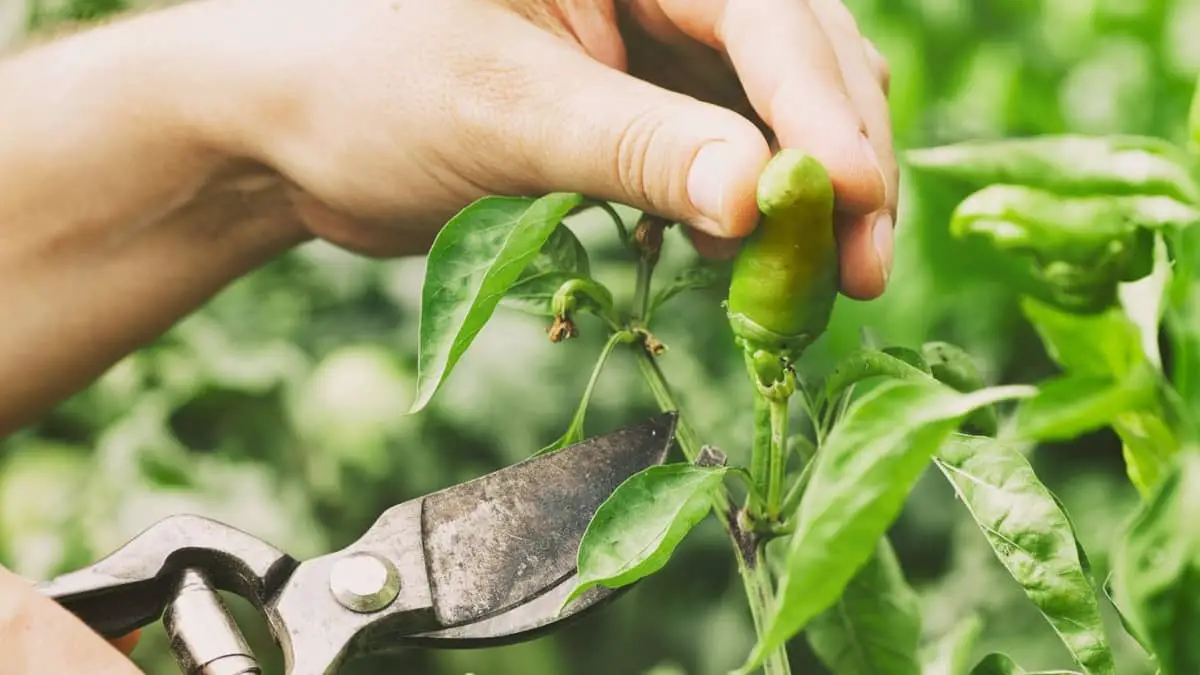Last Updated on October 18, 2024
Are you wondering when to harvest serrano peppers? It is not always easy to know when to harvest a vegetable.
The best way to learn is with personal experimentation and research. We have written this article to teach you all you need to know about when to harvest serrano peppers.
We will also provide you with the top tips to successfully grow serrano peppers. As you may know, there are thousands of different kinds of chili peppers. Serrano peppers are one of these many varieties.
They originate in the mountains of Mexico and are most similar to the loved jalapeno peppers. Remember, all peppers belong to the same family. This means they will have similar growing requirements.
These peppers come in a few different colors. Some can be red, brown, orange, yellow, or green. The green ones are the most commonly seen ones.

Learn more about: How To Grow Moringa From Seeds?
This pepper can be used to make various types of salsas. It is spicier than a jalapeno. So if you like hot, this is a great pepper to grow.
Let’s keep reading to understand more key facts on how to successfully grow and when to harvest serrano peppers!
Table of Contents
Growing and Harvesting Serrano Peppers
When grown correctly, these peppers can grow to be very tall. A full-grown plant is around 5 feet tall! The taller your plant means the more peppers you will get.
If you can grow your plant to be 5 feet tall you can have a very productive plant. They prefer to be grown in a warmer climate. The best temperature to grow serrano peppers is 75 degrees Fahrenheit.
It is possible that in very cold climates, you cannot grow these peppers. If a frost hits, your plants will die straight away. Be sure to plant them 2 months after the last frost to be safe.
You can start the plant from seeds or transplants. It is easier to grow things from a transplant. However, if you want to start from seed, be sure to start them indoors early. This way they will be big enough to transplant by the time the frost has passed.
According to Texas A and M University, “Peppers grow in all types of soils but do best in heavier, well-drained soils. Plant them in areas that receive at least 6 hours of sunlight each day.”
If you feel that your soil has a lot of clay, you will need to amend it with sand. Sand creates air bubbles in the soil and allows for water to pass through rather than be absorbed.
Be sure to add compost around the base of the plant after planting.
Make sure your garden site has enough sun. These plants are sun lovers!
How Do I Know When To Harvest My Serrano Peppers?
As with most fruiting plants, they follow a cycle. First, you will see a flower emerge on the plant. Once these flowers come, they need to be pollinated.
Typically this work is done for you by important things like bees, butterflies, and ants. Once the female flowers have been pollinated, your chili will start to come from the flower.
Serrano peppers have a white flower. So, when to harvest serrano peppers?
Once you see the chili starting to form, you need to wait until it is big enough to harvest. Serrano peppers grow to be around 4 inches long. It is possible to harvest them earlier.
As the pepper begins to ripen, it changes color. You can harvest as soon as you see the first signs of the changing color or you can wait until the full color has come in.
If you leave the chili on the plant too long it will begin to change color and rot. It is possible to pick the rotting chilies and dry them to use the seed. You can save them to plant for next year.
It is very easy to harvest chilies. Once they are ready, you can lightly pull on the chili and they should pop right off. It is common that you will have a lot of chilis all around the same time.
When you have too many chilies try to dry them or make a hot sauce.
The serrano pepper plant does not like very wet soil. Be sure not to overwater. Make sure that the soil is moist about 1-2 inches deep around the roots.
You can check soil moisture by sticking your finger in the soil. If you feel that it is wet, there is no need to add more water.
Serrano peppers are considered one of the easier chilies that you can grow. Also, they are perennial plants. This means that they will continue to grow fruit and flowers year after year.
It is a good long-term investment that is totally worth it. This is especially true if you like spicy food. Give it a try!
Feel free to comment and ask questions below!
FAQs
[rank_math_rich_snippet id=”s-83a0c460-5643-48c5-a876-a41d9af09f53″]
Tanya is an environmental enthusiast who loves living green and sustainable. She is passionate about educating others on how to live a more sustainable lifestyle and reduce their environmental footprint. She is a firm believer that we can all make a difference by taking small steps towards reducing our carbon footprint. Tanya has a degree in Environmental Studies and is currently working at a local non–profit organization which focuses on educating the public about sustainable living. In her free time, Tanya enjoys gardening, biking, and exploring nature. She also loves to cook healthy meals using organic and locally–sourced ingredients. Tanya is committed to doing her part to help preserve our planet for future generations.

